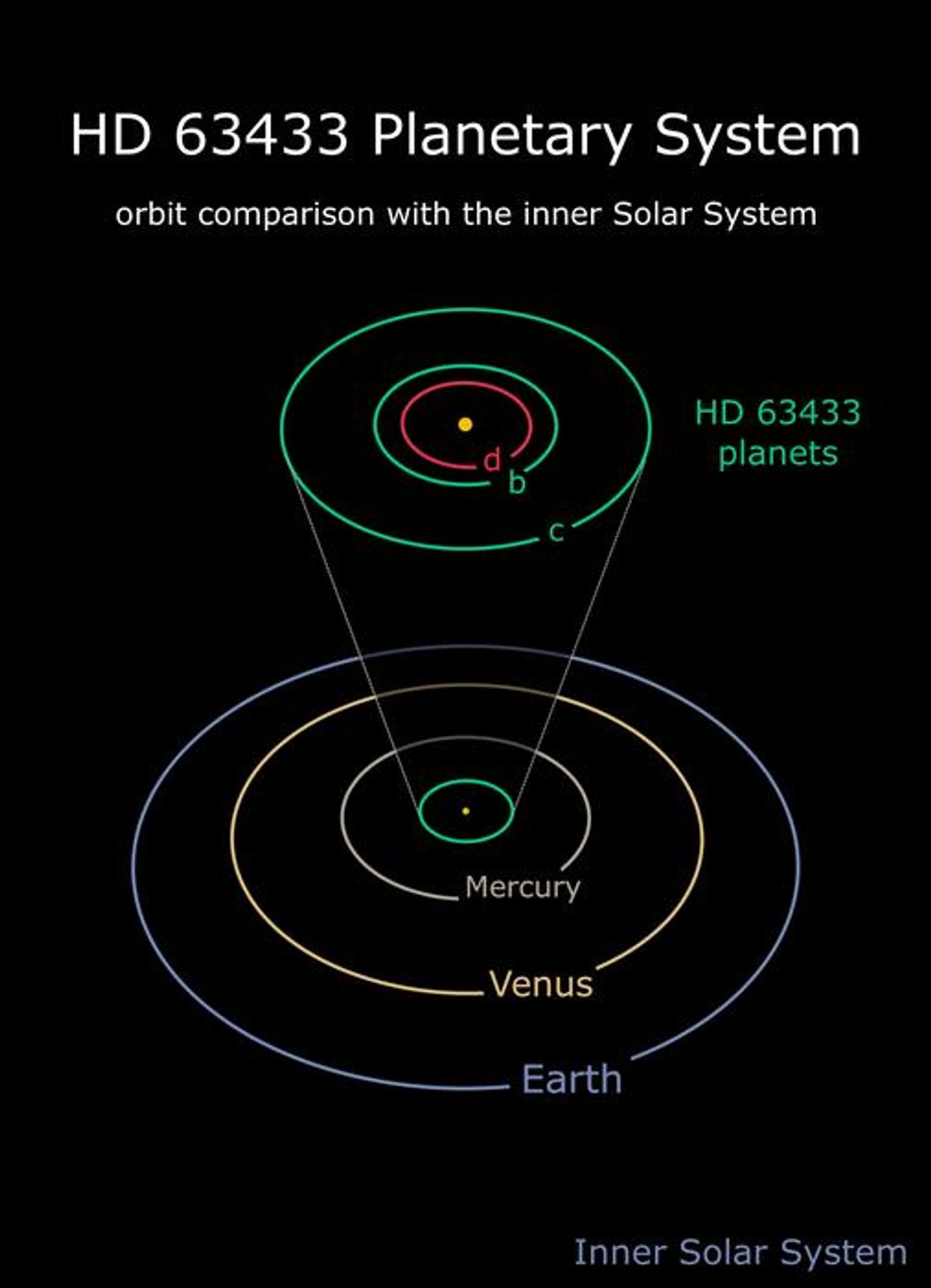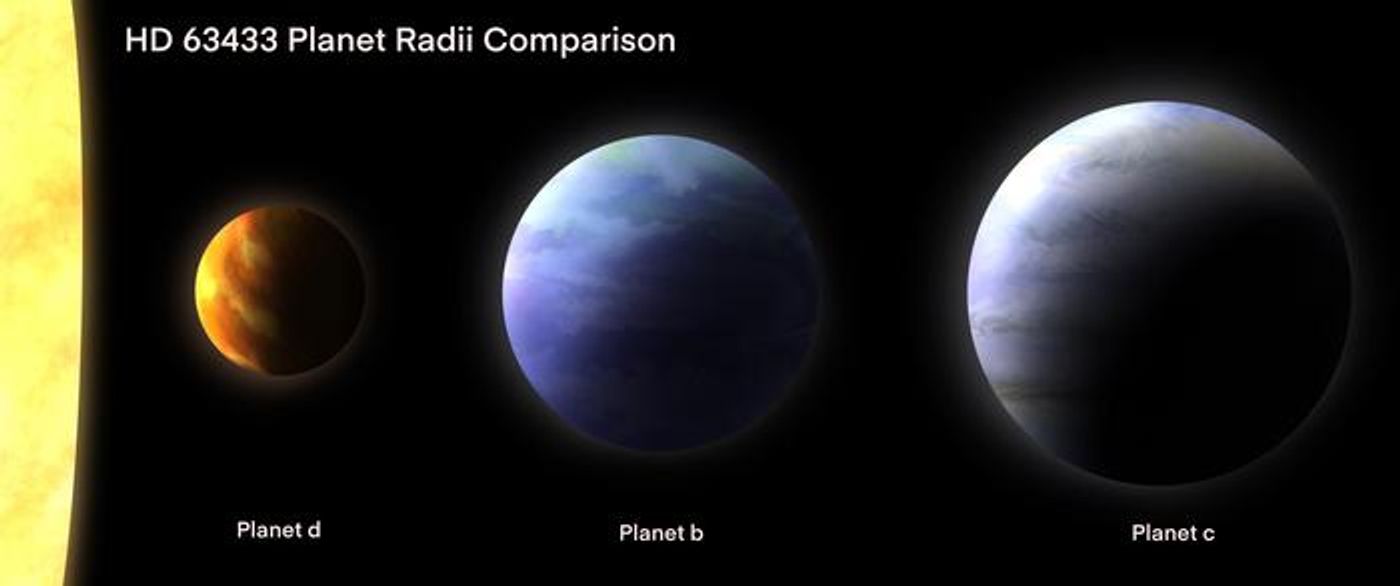How many exoplanets share Earth-like attributes? This is what a recent study published in The Astronomical Journal hopes to address as a team of international researchers led by the University of Florida (UF) have discovered a lava world exoplanet whose radius is just slightly larger than Earth’s. This study holds the potential to help astronomers better understand the variety of worlds that could exist throughout the cosmos and the processes behind their formation and evolution, as well.
For the study, the researchers used data from NASA’s Transiting Exoplanet Survey Satellite (TESS) and the European Space Agency’s Gaia spacecraft to examine the HD 63433 system, which is located approximately 71 light-years from Earth. Through this, they identified HD 63433 d, whose radius is slightly larger than Earth’s (1.1) and orbits a Sun-like star in only 4.2 days. For context, the planet Mercury, which is the innermost planet in our solar system, orbits our Sun in 88 days.

Credit: Ben Capistrant
“So, it’s really moving around there. At that distance we expect it to be tidally locked, like how the moon is locked to us with one side always facing the Earth. That means the heating is uneven, and we estimated that the daytime temperature is consistent with molten rock,” making it a “lava Earth,” said Ben Capistrant, who is a PhD student in the Department of Astronomy at UF and lead author of the study.

Artist’s illustration of the HD 63433 system, with the recently discovered planet d, being the innermost planet in the system. (Credit: Ben Capistrant)
The team determined that HD 63433 d is only approximately 500 million years old (Myr), making it geologically young, as our Earth is more than 4.5 billion years old (Gyr). Given its extremely close orbit, the team estimates the dayside surface temperature of HD 63433 d is approximately 1530 K (2,294 degrees Fahrenheit), which they conclude “resembles other lava planets, such as CoRoT-7b and Kepler-10b.” Additionally, the team notes that HD 63433 d “is the smallest confirmed exoplanet with an age less than 500 Myr, and the nearest young Earth-sized planet.”
Going forward, the team hopes to conduct further research on HD 63433 d to better understand what’s known as atmospheric loss given the exoplanet’s incredibly tight orbit. Hence, it is hypothesized that HD 63433 d’s atmosphere is slowly being stripped over time from the intense heat of its star.
What new discoveries will astronomers make about lava world exoplanets in the coming years and decades? Only time will tell, and this is why we science!
As always, keep doing science & keep looking up!
Sources: The Astronomical Journal, NASA, EurekAlert!





